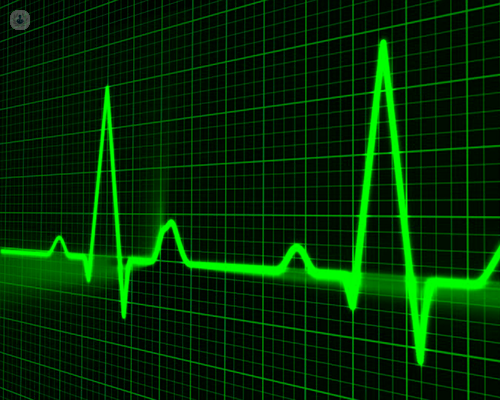What is angina and what does it mean?
Autore:What does chest pain feel like?
Heart pain classically comes on with exercise, such as when walking uphill or rushing around. There are other typical features such as a constriction or tightness in the chest which is relieved by rest. Some patients, however, don't have this typical symptom and their pain or constriction may occur in the shoulders, the arms or in the jaw or the teeth. Therefore, diagnosing angina or heart pain can be difficult. Some people feel it as the same feeling as indigestion, and that is a really common situation and of course, to the patient they don't think immediately that this feeling could be heart-related.
Dr Nicholas Robinson, a leading cardiologist, explains what heart-related chest pain (angina) is and the risk factors associated with it.

How is heart-related chest pain diagnosed?
The first step in trying to establish whether chest pain is heart-related is based upon the history of this symptom. Classically the symptom can come on with exercise. If the symptom is classical, then it's highly likely that the symptom is angina based upon the history alone, but in most cases, we'll require investigations to truly establish whether there's underlying coronary artery disease.
These days we have a fantastic set of non-invasive investigations to initiate the diagnosis of coronary artery disease. The mainstay in my practise is a CT coronary angiogram. This is a non-invasive test which takes ten minutes to do and involves small x-ray doses and the use of some contrast. From this scan we can obtain superb images of the coronary arteries in a rapid non-invasive fashion. This method has developed rapidly over the last few years with the latest machines being fantastic at diagnosing coronary disease.
The second form of a non-invasive test which I use is a stress MRI scan which looks to see if there are any problems with the blood flow in the heart arteries.
The next step which is my area of expertise is with invasive angiography. This is the gold standard for diagnosing coronary artery disease. This is a procedure performed under local anaesthetic as a day case, and in my hands, from the radial artery (the pulse at the wrist). This is the best method to evaluate the true level of coronary artery disease.
What heart-related factors can cause chest pain (angina)?
The main risk factors that we know about are quite well-known publicly and include:
- Smoking
- Hypertension (raised blood pressure)
- High cholesterol
- Diabetes
- Obesity
- Family history of the genetics of coronary artery disease
Genetics is very important and I will screen and treat many patients with a strong family history of heart attacks or cardiac events under the age of 60.
How can you tell the difference between angina and a heart attack?
Angina is classically a stable condition which occurs with exercise and patients will describe that after walking maybe 400 yards or walking uphill or briskly, they develop a discomfort and then they have to rest. The important feature of angina is that when they rest the pain goes within five or ten minutes.
A heart attack, however, can be quite difficult to diagnose and will often occur at rest and sometimes in the middle of the night. They generally last longer than five or ten minutes and can make the patient feel generally unwell with breathlessness or exhaustion. The classic symptom is a well-described tight band across the chest. Heart attacks can be life-threatening condition.
Sadly, there are some people who have a heart attack which is much more difficult to diagnose with rather subtle symptoms of mild discomfort at rest. Even more difficult, there are some people who have a heart attack with no discomfort whatsoever and that is quite common in the elderly and in diabetic patients. Hence, those patients who do not have any discomfort may just feel generally unwell or feel exhausted, have nausea or feel faint. In those circumstances heart attacks are frequently missed.
Sadly, a heart attack is still a very common condition. It is one of the most common causes of death in the United Kingdom at this stage. There are 200,000 heart attacks each year and about 66,000 patients die from a heart attack every year, and maybe 22,000 of those are under the age of 75. Despite a lot of the progress we have got for the treatment of heart attacks, which involves opening the artery very quickly and using balloons and metal tubes called stents, sadly there are still a lot of people who die from heart attacks.
Therefore, detecting coronary disease and giving the prevention that will help reduce the incidence of heart attacks is probably one of the most crucial things we do as cardiologists.
How do you treat coronary artery disease?
There are two main aspects of the treatment of coronary artery disease. The first is the use of medication to reduce the risk of a heart attack. And that would be aspirin, the use of a tablet called Astatine which lowers cholesterol, and a beta blocker tablet which protects the heart.
The next treatment of coronary artery disease is to open up narrowings in the arteries using a balloon and a metal tube called a stent. This is a procedure which I perform via the radial artery. From there, a tube is passed up to the heart to open up the artery and put in this metal scaffold which helps the blood flow down the heart arteries to relieve all of the symptoms. That is the treatment for angina, but also an emergency treatment for patients who are having a heart attack.
To find out more, make an appointment with a specialist.


